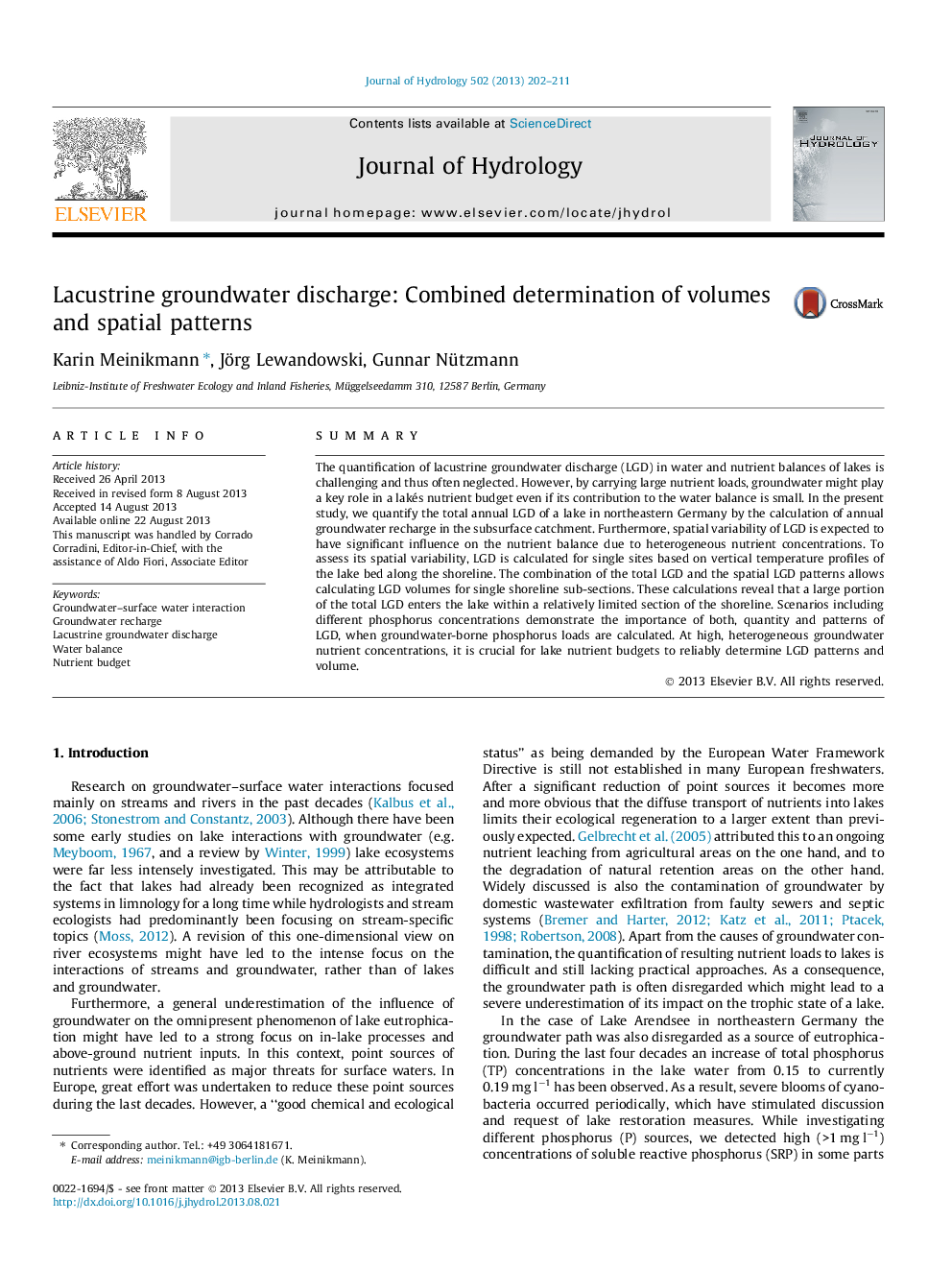| Article ID | Journal | Published Year | Pages | File Type |
|---|---|---|---|---|
| 4576225 | Journal of Hydrology | 2013 | 10 Pages |
•LGD is a key player in nutrient budgets of some lakes.•Quantification of LGD is challenging due to its spatial heterogeneity.•Quantity and pattern of LGD jointly control groundwater-borne P loads.
SummaryThe quantification of lacustrine groundwater discharge (LGD) in water and nutrient balances of lakes is challenging and thus often neglected. However, by carrying large nutrient loads, groundwater might play a key role in a lakés nutrient budget even if its contribution to the water balance is small. In the present study, we quantify the total annual LGD of a lake in northeastern Germany by the calculation of annual groundwater recharge in the subsurface catchment. Furthermore, spatial variability of LGD is expected to have significant influence on the nutrient balance due to heterogeneous nutrient concentrations. To assess its spatial variability, LGD is calculated for single sites based on vertical temperature profiles of the lake bed along the shoreline. The combination of the total LGD and the spatial LGD patterns allows calculating LGD volumes for single shoreline sub-sections. These calculations reveal that a large portion of the total LGD enters the lake within a relatively limited section of the shoreline. Scenarios including different phosphorus concentrations demonstrate the importance of both, quantity and patterns of LGD, when groundwater-borne phosphorus loads are calculated. At high, heterogeneous groundwater nutrient concentrations, it is crucial for lake nutrient budgets to reliably determine LGD patterns and volume.
